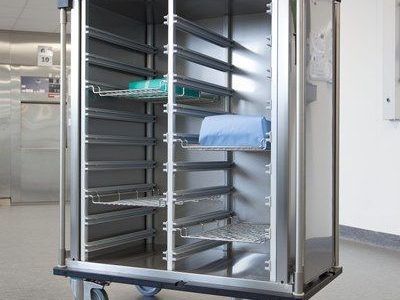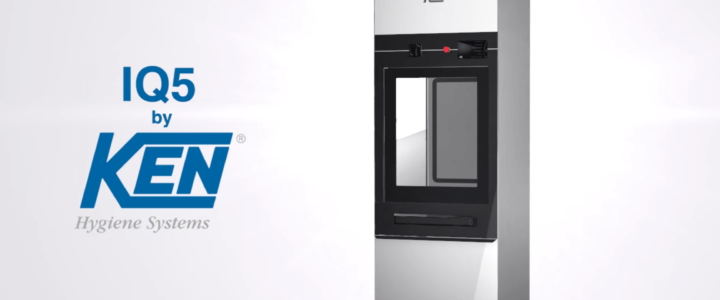Positioning a patient for a surgical procedure is a task that should never be undertaken lightly. Both the perioperative nurse and the patient are vulnerable to injury when positioning a patient on the operating room table. Safe patient positioning is the responsibility of the entire surgical team. In fact, Gefen, et al. states that “Surgical positioning is a sub-speciality of surgery that involves management of patient risks by the surgeon, anaesthesiologist, and nurse because of the combined effects of anaesthesia, trauma, blood loss and immobility”1 .
Author: Leanne Chetty
SafMed E-Learning Module 1 2021 – Positioning for Surgery Preventing Injuries

Click here to read the article: Position for Surgery Preventing Injuries
To complete this SafMed Express E-Learning Module simply click on the above link to access the article. Once you have read and studied the article click on the below test link and answer all the questions.
Our previous Express Learning referred to the three variables in positioning for surgery, which are the patient, the procedure, and the tools.
During this session we will delve into more detail around Patient considerations needed to prevent injury to the patient, during positioning.
Don’t forget to fill in your name and e-mail address on the test so we can send you your certificate of completion once you have passed the test!
Good Luck!
SafMed E-Learning Module 1

Importance of thorough cleaning of eye instruments
It is a well-known fact that contaminated eye instruments can cause eye inflammation that could result in the loss of sight. TASS, toxic anterior segment syndrome, is an acute severe inflammatory reaction to a toxic contaminant introduced into the anterior chamber during intraocular surgery.
Lighting the Way to Surgery: What is Needed in a Surgical Light
Introduction
Man’s earliest attempt to provide lighting for tasks began in prehistoric times with the use of fire for illumination. From burning pine knots to lighting walking paths to using a wick in a Grecian lamp, the technology of illumination progressed slowly. After many injuries and accidents with oil and gas lamps, Thomas Alva Edison developed the first practical incandescent lamp in 1879. Since then, lighting technology using artificial light sources has steadily improved.
Maintaining Sterility During Transport and Storage

Maintaining Sterility During Transport and Storage
Utmost care is taken in the CSSD to clean, check, assemble, pack and sterilize instruments sets, bowl packs, gown packs and linen. It is essential that these items are then transported and stored in such a manner as to maintain sterility. According to Nancy Chobin, sterility maintenance is directly affected by packaging materials, storage methods and conditions, handling practices, and methods of distribution.1
KEN Netcom

KEN NetCom
Communication and documentation via networks
KEN has developed KEN NetCom, an innovative, network-based software that ensures easy and reliable communication between users and technical staff with the machines to which the system is selected. KEN NetCom appears as a website on the online PCs and therefore software must not be installed on the department or institution’s own PCs.
KEN XML Connect
Another option is to get the machine to deliver a continuous data stream to a larger system. More and more large hospitals invest in quality assurance systems where data is gathered from many different types of machines. These machine types can be washing machines, autoclaves, x-ray equipment, scanners, dishwashers, etc.
Such a system, typically consisting of one or more computers connected to a large server, is a solution that accommodates the user’s interest in presenting all the collected data in a particular way. Therefore, KEN has chosen XML standard communication for these major systems.
Is my packaging (sterile barrier system) seal important?
Reusable surgical instruments are subjected to a decontamination process. Which means they are cleaned, inspected, packaged, sterilized transported and stored after every use on a patient. The purpose of the packaging system is to keep the instruments sterile until they are used, and to allow them to be opened aseptically when they are used. The international standard ISO 11607-1 describes the requirements for sterile barrier systems (packaging), while the ISO 11607-2 standard describes validation of packaging processes. This standard is applicable to the medical industry, to health care facilities (hospitals, doctors and dentists).
Clinical Benefits of LED Surgical Lights
Much has been written about the transition of OR lighting away from traditional incandescent technology to LED technology. By now, some of the advantages of LED roll off the tongue; less heat, longer life, better energy efficiency. But these advantages are just the beginning.
If the point of new technology is to provide better patient outcomes, only one of these often stated advantages, less heat, directly applies. LEDs radiate much less heat than incandescent bulbs, so the surgeon and staff are more comfortable important during long cases). And cooler light means less heat in the surgical field, reducing the risk of drying out exposed tissue. There are several other advantages of LED lighting, beyond reducing heat, that have direct clinical benefits.
Cleaning surgical instruments in an Automated Washer Disinfector
Cleaning surgical instruments in an Automated Washer Disinfector:
Decontamination of a surgical instrument is a complex process that involves a number of steps and processes.
Cleaning is the first critical step of the process. If instruments are not cleaned they cannot be sterilised. Residual debris remaining on an instrument after cleaning will impede sterilization.
